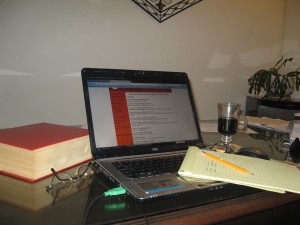 When you prepare to learn a second language it is helpful to understand the distinct but connected components that comprise your studies. Vocabulary, grammar, and practice are the three keys to language learning. Becoming bilingual very much depends on the inclusion of all three, and understanding their place in the order of things will help you learn quickly and thoroughly. Interestingly, as you progress from basic to intermediate to advanced, the three components start to merge for more in depth learning and comprehension.
When you prepare to learn a second language it is helpful to understand the distinct but connected components that comprise your studies. Vocabulary, grammar, and practice are the three keys to language learning. Becoming bilingual very much depends on the inclusion of all three, and understanding their place in the order of things will help you learn quickly and thoroughly. Interestingly, as you progress from basic to intermediate to advanced, the three components start to merge for more in depth learning and comprehension.
1. Vocabulary
Learning the words is the very basis of language learning. When you understand the words you increase your comprehension. Even a single word can say a lot! But vocabulary is about more than reading and writing, it is also about speech and sounds. Make sure your source is authentic and reliable!
2. Grammar
Learning where to place the words in a sentence is what grammar is all about. And using sentences to express ideas is what language is all about! Grammar can be tricky. There are rules to learn, and then there are also exceptions to the rules to learn, but don’t let it overwhelm you. To make it easier on yourself, grammar should be learned in increments. That is to say, start with the basics, and build on those. Taking it a step at a time will help you break it down into manageable pieces.
3. Practice
Practice makes sure you have learned the material. It includes speaking or reading aloud, interacting with others, and using repetition. Look for materials that require you to fill in blanks, rearrange sentences, and answer questions. Look for quizzes, puzzles, and illustrations that will elicit correct answers from your memory. Repeating words or sentences gets you started, but using what you have learned in new constructions, created by you, means you have stored the material in your brain for future use. Use television and radio and CDs to listen and repeat; use classmates and teachers for interactions; seek out community members to exchange greetings and pleasantries. Practice leads to fluency!
Language learning is clearly a process that starts with words, builds to sentences, and finally, with practice, becomes a means of full expression. But perhaps we should include a fourth key: hard work! Individual effort and self-motivation support successful language learning, and people who become articulate in a second language are, without exception, rewarded by the achievement in many ways. Become bilingual; make it your goal!
